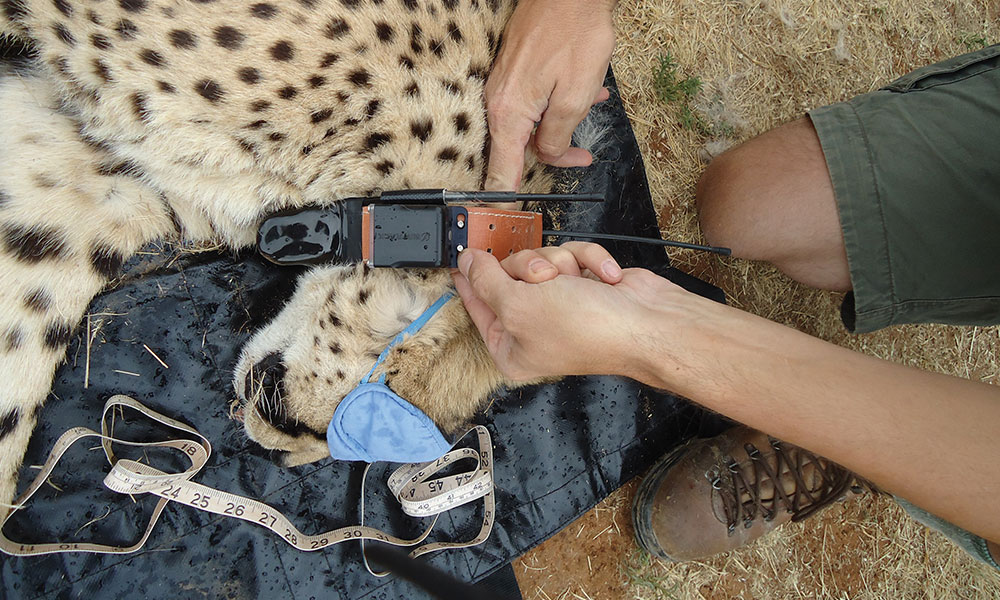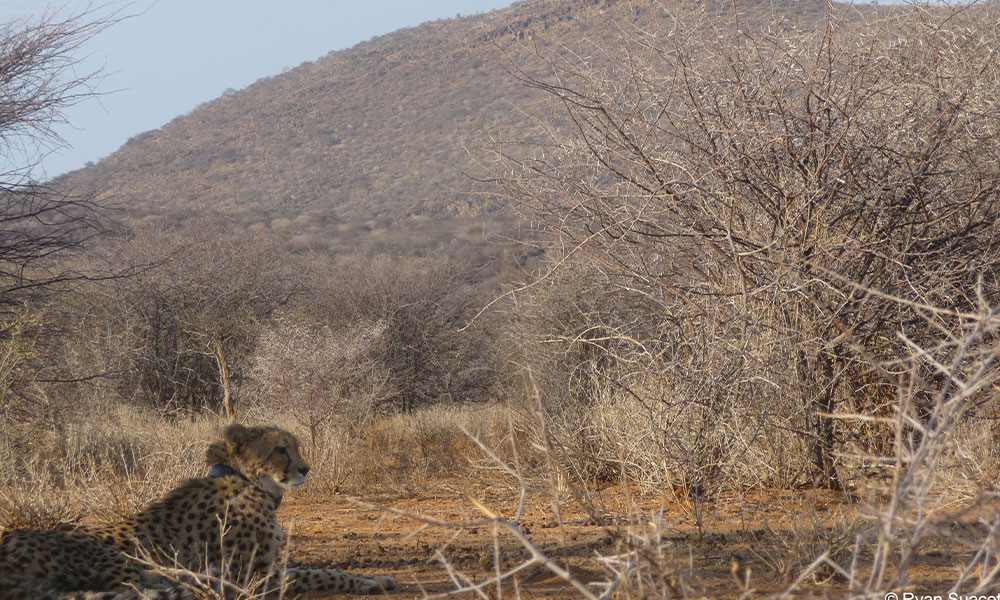A Cheetah’s History, Habitat and Prey, Impacts Their Range
-

- by Brandy Morenko Campbell May 31, 2024

Article Summary: Rewilding Landscapes with Apex Predators – Cheetah (Acinonyx jubatus) Movements Reveal the Importance of Environmental and Individual Contexts
Research authors: James Dimbleby, Bogdan Cristescu, Kathan Bandyopadhyay, Nicola Jane Rooney, Laurie Marker
Cheetah conservationists have increasingly used the reintroduction of rehabilitated, rescued, and translocated animals to return cheetah populations to their historical territories. However, knowing where a particular animal will thrive best is challenging. Since each individual rehabilitated cheetah has its own complicated social history and each release site can have its own set of challenging variables, researchers set out to see if they could better understand how a particular environment, in combination with different social histories, impacts a cheetah’s movement over the landscape.
The once wide-open savannahs have been slowly invaded by thorny wooded bushes which affects how cheetahs hunt and how their prey occupies and moves about the habitat. Cheetahs also face other serious challenges to their survival such as persecution by farmers, cub smuggling, and injury from other predators. As a result, the numerous orphaned cubs, injured animals, or nuisance animals that need to be relocated, are becoming essential to the population and species survival. CCF’s experienced staff and volunteers are extraordinarily dedicated to rehabilitating these animals and rewilding those that can be. Although, because some animals are local, some are not native to the CCF area, some are captive born, and some are wild, they each bring their own rewilding adaptation abilities to their story.


CCF researchers compared 15 years of GPS radio collar data on 17 cheetahs and collected data on the prey inhabiting the various landscapes of the Central Plateau of Namibia. The GPS data allowed researchers to determine how far and where they traveled. This group of animals included wild local animals, wild rehabilitated local animals, rehabilitated-relocated animals, and wild rehabilitated-relocated animals. Prey species were observed visually in the various areas.
To the researcher’s surprise, the data showed that local wild cheetahs roamed the furthest, followed by local rehabilitated animals. This is suspected to be due to territorial behavior. In years where larger prey species were more prevalent, the cheetahs not surprisingly, did not travel as far, but adapted to moving further, if necessary, when large prey was scarce. Cheetahs were also found to be uncharacteristically moving longer distances during twilight hours, rather than during the day. This finding reinforces that farmers should not allow their livestock to roam during twilight and nighttime hours. Also not surprising, cheetahs also moved less in the cold-dry season and males traveled further than females. Cheetahs that were relocated and unfamiliar with an area, traveled less distance and were perhaps more cautiously exploring and interacting with other cheetahs in the area. Rehabilitated local cheetahs were also noted to move longer distances when near waterholes. It’s thought that this may be to avoid other large carnivores using the waterhole.
Understanding animal movements to accommodate their natural tendencies, gives conservationists the tools they need to help increase the odds of survival for those precious few animals that can be rehabilitated and rewilded. With less suitable habitat available for large carnivores, it’s important to consider that when cheetahs move less, they encounter less opportunities for human-wildlife conflict such as road mortality. This study provided CCF researchers with the data to recommend that it may be beneficial to release females first since they tend to roam less. This may help in the release of future males to take up residency in the area. It also highlighted that we know very little about how introduced apex predators interact in the ecosystem so we must continue observations in released animals to help guide future conservation strategies.
Related Reading
-
August 27, 2025
Sniffing Out Stories with the Scat Detection Dog Team




